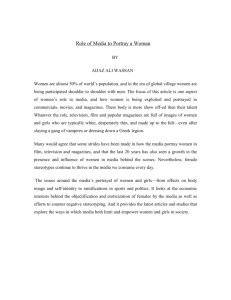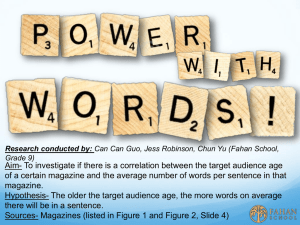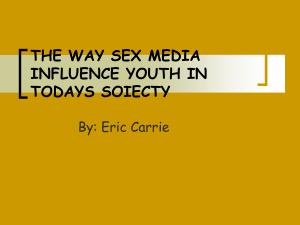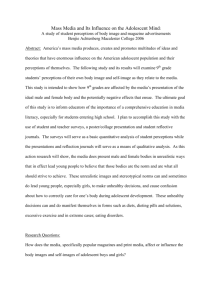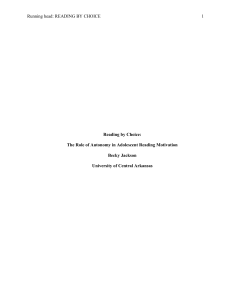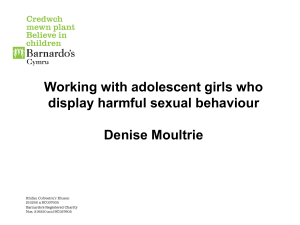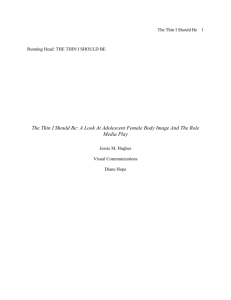Teen Magazines and Their Influence on Adolescent Girls
advertisement
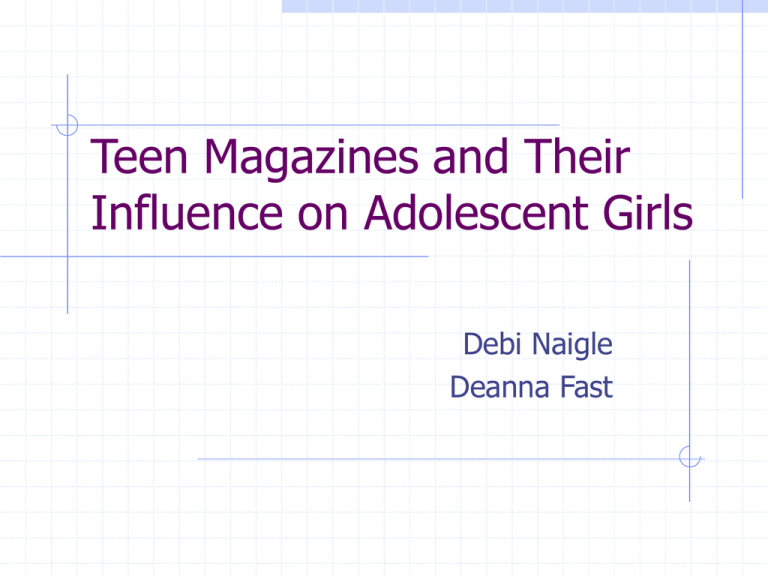
Teen Magazines and Their Influence on Adolescent Girls Debi Naigle Deanna Fast Teen and beauty magazines are a pervasive feature of adolescent girls’ lives: Teen and women’s beauty, fashion and health magazines make up over 30% of the magazines sold yearly (Magazine Publishers of America, 2003). 10 million teen and beauty magazines are circulated each year and 6.5 million are in adolescent girl’s homes (Norton, 2002). At least 50% of adolescent girls are frequent readers of health, beauty and fashion magazines (Nichter, 2000). Reasons for this: The magazines make adolescent girls feel older and more mature. The magazines offer tips and advice on hair, fashion and makeup. There is an entertainment value. Reading the magazines builds a sense of community and ties to other adolescent girls. Gives girls a window on the world. This window on the world is defined as: the “cultural dictation of the norm.” (O’Hara & Nanox, 1999) Problems occur in the areas of: Appearance Social Values Hyper-sexuality Accelerated Appearance: Magazines place a high value, either overtly or covertly, on outer appearance rather than inner self The average model in the 1950s was 5’4”, 140 lbs; the average model today is 5’10”, 110 lbs. This results in adolescent girls going to extreme lengths to meet these unattainable standards. 2/3 of females are either on a diet or plan to start one (Garner & Kearney-Cooke, 1996). Appearance: Studies have found a positive correlation between the frequency high school girls read beauty and fashion magazines and their use of appetite suppressants, skipping two meals a day, and intentional vomiting (Thomsen, Webber & Brown, 2002). 83% of those who often or sometimes vomit are frequent readers and 73% of those who use suppressants or weight control pills are frequent readers. Failure to meet these “standards” results in lowered self-esteem, depression, learned helplessness and distorted body view. Social Values Females are taught that they are supposed to be male-pleasers and that it is acceptable to compete with other woman to earn male’s acceptance. Females are shown that abusive and controlled behavior is acceptable. All relationships are heterosexual. Deception and mixed messages in relationships is acceptable. Females are taught to crisis search. Hyper-sexuality Adolescent females are given the message that they need to get acceptance from males. There are contrasting messages: they should use their sexuality, but never give into it. Some magazines go as far as giving tips on how to “do it.” 500% increase (from 1970 to 1990) in the number of 15 year old girls who are sexually active (O’Hara & Lanoux, 1999) Accelerated Maturity Magazines promote sexually suggestive and age inappropriate dress and actions. Models in the magazines are older than the intended target audience. This forces adolescent girls to feel the need to grow up socially and sexually. Ways to help teens Look for alternative magazines such as Teen Voice that contain no advertising and include peer editing and submission. Engage in media literature studies with teens.
